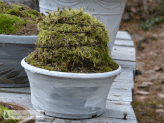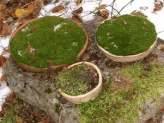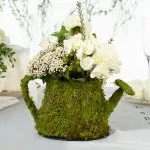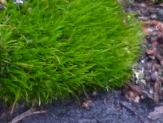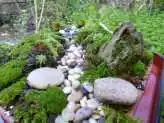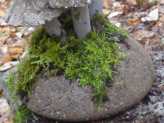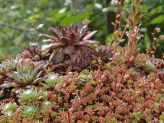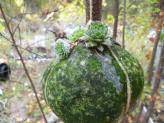Make your own gorgeous centerpiece
I’ve always been attracted to mossy things. I think it’s because it makes everything look old and romantic.
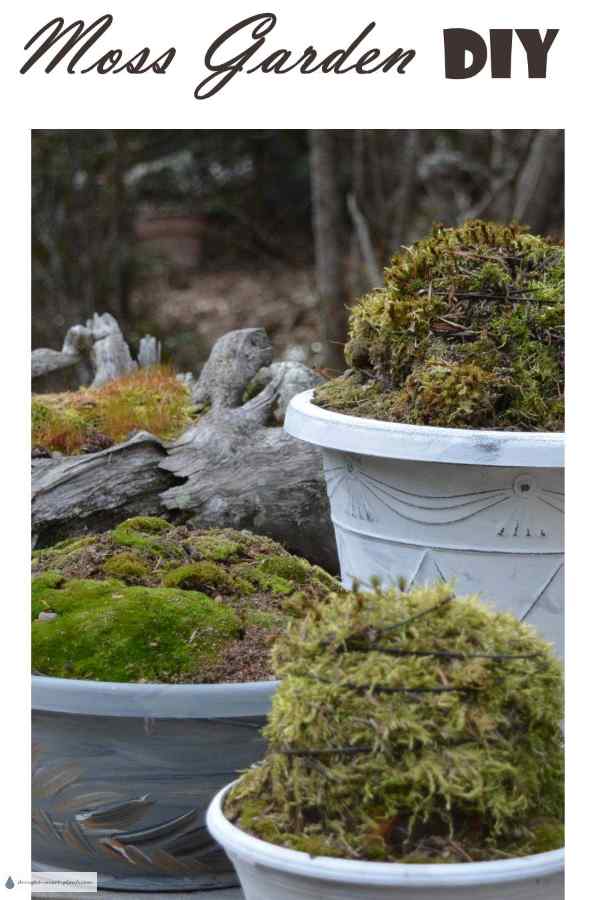
I didn’t realize just how easy it is to grow until I moved to my current place. It’s in the mountains, with lots of trees, which sounds about right, but it’s not in a rain forest by any means.
Moss just grows naturally on the silty soil, which surprised me. I thought it needed more organic matter, like leaf mould.

For this project, using my painted plastic pots, I wanted to make something like a topiary that would just get better and better.
The soil I used is about half and half my native silty soil, and peat moss for water retention.
I didn’t want it to be too heavy and waterlogged, as moss generally prefers good drainage. If it’s too dry for it, it will go dormant for a while, and replenish when the weather changes to more showery.
In the bottom of each pot I put a closed yogurt container to take up some of the room. Moss doesn’t need a deep soil, except for moisture, so this won’t affect it.
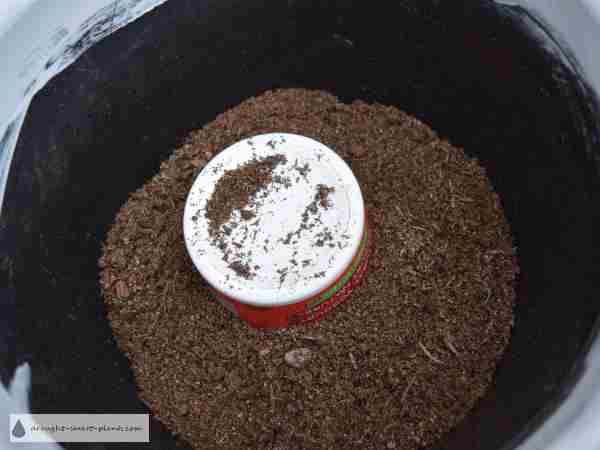
I filled the rest of the pot with the mixed soil, slightly moistened but not wet.
Then I placed established pieces of moss scraped from shady spots around the garden and gently pressed it onto the soil to make contact.
Expecting a shower or two (it is almost April, after all) I didn’t bother watering it.
Moss is an odd creature; it doesn’t fill in if there aren’t enough pieces to cover.
This picture of a planter I did two years ago illustrates that perfectly – each little square of moss was a cell of soil that grew moss accidentally, but when it’s planted it stays in the square and never grows out of that shape.
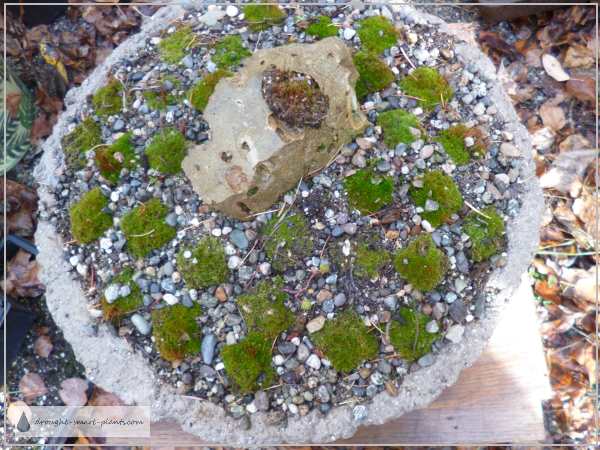
Now to put the planters in a shady spot and wait for it to get established. This can take a year or more.
Care for my moss gardens consists of pulling out the occasional weed (the soil wasn’t pasteurized, after all) and a sprinkle of water if it looks really dry.
Other than that, Mother Nature does a better job than I can!

